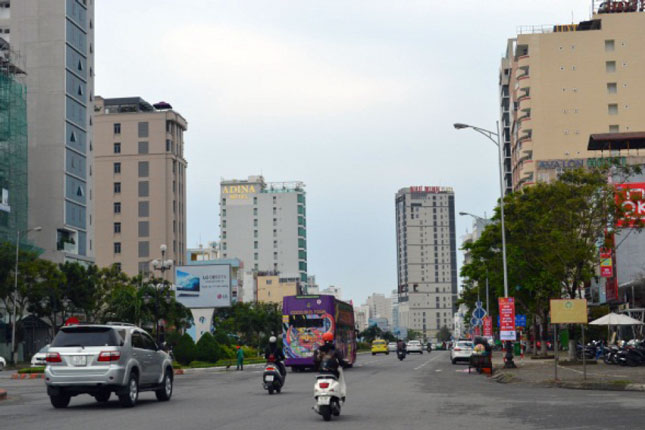City's great development potential needs to be fully tapped
Following the great success of the APEC Economic Leaders' Week (AELW) 2017 and the promotion of the ‘2018: The Year of Investment Promotion’ campaign, the ‘Spring Dialogue 2018’ event recently took place in Da Nang.
 |
| Many businesspeople urged the city to make adjustments to traffic planning and to boost tourism development for the sake of economic development in the coming years (Photo: DNO/ Viet Dung) |
The intention was to offer an opportunity for the city leaders to collect constructive ideas and recommendations from representatives from business associations, and domestic and foreign enterprises to accelerate the city’s sustainable development during this year, and in the years ahead.
Mr Niwa Dai, the General Director of the Niwa Foundry Da Nang, pointed out to the fact that, in comparison with other large cities in ASEAN member countries, industrial parks (IPs) are located near the city’s inner areas, and its international airport and seaport.
With regard to its strategic geographical position, Da Nang is the Pacific gateway for the East-West Economic Corridor (EWEC), which links Thailand, Myanmar, Laos and Viet Nam, and it boasts modern traffic infrastructure systems, with convenient transportation via roads, railways, airways, waterways and seaports.
In particular, Da Nang should promote its socio-economic progress towards the ‘Internet-of-Things (IoT)’ model. The city is expected to become a new, typical urban area in ASEAN, showing off its high flexibility in promoting new applications to make more breakthroughs.
In his point of views, Ishikawa Yoshitaka, the General Director of the Les Gants Co Ltd, proposed the city enable small and medium-sized Japanese enterprises to either construct their own factories or rent already-built ones in IPs , and this, in turn, will help to attract more investors.
General Director of Indochina Capital Peter R Ryder recommended the local authorities not to grant investment licences to investors who have yet to show their financial ability and other internal strengths so as to avoid the delays in the implementation of their projects due to the shortage of capital.
In his remarks, Director of VinaCapital Da Nang Le Minh Phuc said it is a good idea to set up a motorbike-free area similar to famous one in Myanmar’s Yangon City.
Alongside, importance should be attached to continuing developing 4- and 5-star accommodation establishments in the years ahead in a bid to attract even more VIP visitors, thereby helping to generate even higher tourism revenue for the city.
Mr Derrick Quentin, the Chief Representative of the William Angliss Institute in Viet Nam, suggested that dedicated parking areas be established in locations bustling with many restaurants, hotels and holiday resorts, in addition to the installation of more public lights along coastal routes.
Ms Kako Sasai, the Deputy Chief Representative of the JETRO in Ha Noi, said she hoped that Da Nang would promote its competitiveness, especially learning from Singapore's valuable experience in appealing for more international investors, including those from Japan, in the coming time.
The Japanese expert also pointed out to the fact that instructions in Japanese for visitors have yet to be introduced at the city’s international airport and its inner areas.
According to Dr Hirai Yukiko, the CEO of Selfwing Viet Nam Incubation Company, in an attempt to attract more foreign investment, it is now a high time for the city to advertise its image as one of the most attractive startup destinations in Viet Nam, in addition to the promotion of the growth of such spearhead sectors as IT, tourism and hi-tech industry.
Special heed should be paid to facilitating the establishment of more invention spaces, laboratories, and start-up incubators with their design similar to either Silicon Valley in the US or the famous ones in Singapore.
Last, but not least, greater efforts should be made to create closer links with localities in the central region's key economic zone for the sake of their mutual development.
In particular, Da Nang should identify itself as a hub specialising in offering services for large soon-to-be-built manufacturing centres located in the provinces of Quang Nam and Quang Ngai in a bid to also enjoying the benefits of their progress.